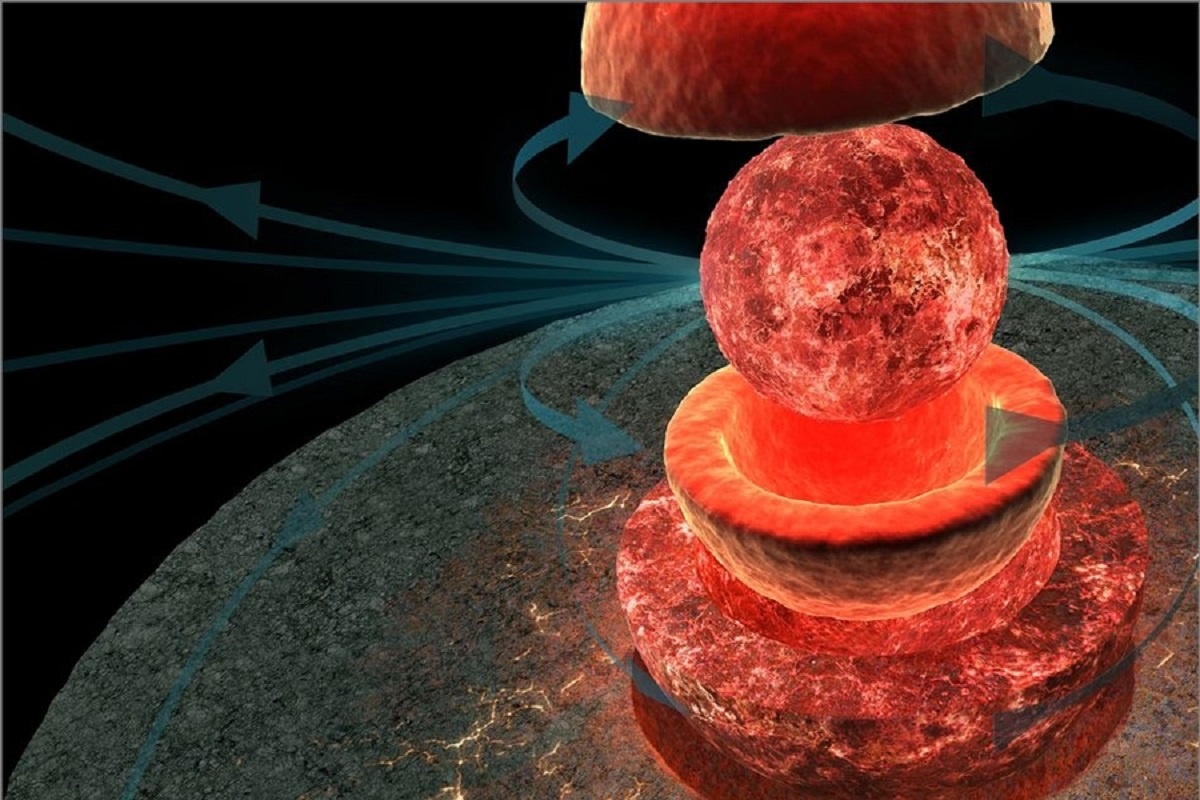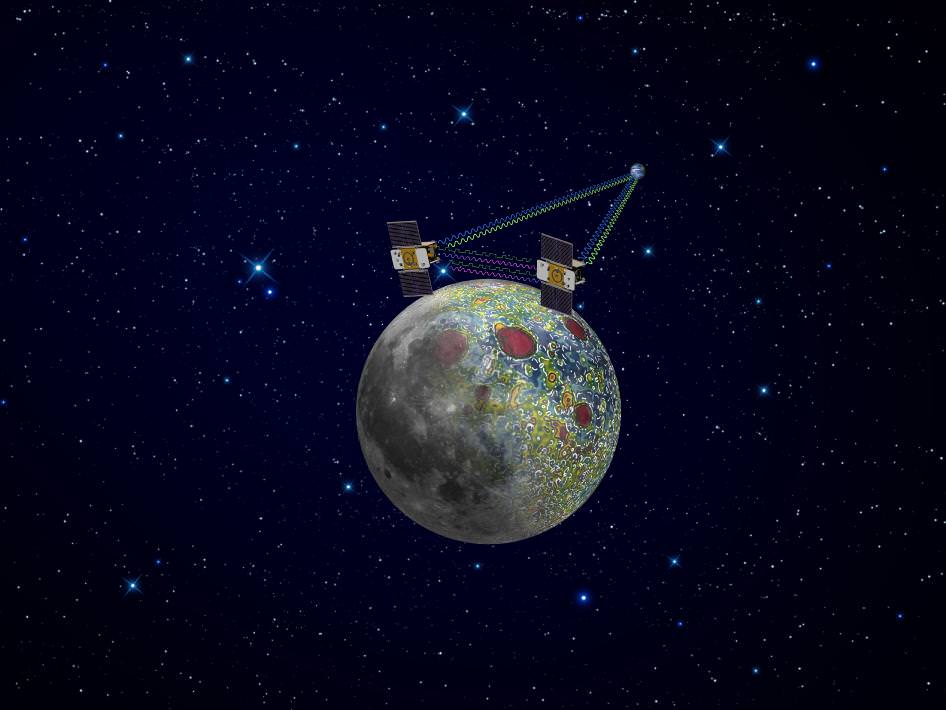The shape of the moon deviates from a simple sphere in a way that scientists have struggled to explain. But new research shows that tidal forces during the moon’s early history can explain most of its large-scale topography. As the moon cooled and solidified more than four billion years ago, the sculpting effects of tidal and rotational forces became frozen in place.
Astronomers think the moon formed when a rogue planet, larger than Mars, struck the Earth in a great, glancing blow. A cloud rose 13,700 miles (22,000 kilometers) above the Earth, where it condensed into innumerable solid particles that orbited the Earth. Over time these moonlets combined to form the moon.
So the moon was sculpted by Earth’s gravity from the get-go. Although scientists have long postulated that tidal forces helped shape the molten moon, the new study provides a much more detailed understanding of the additional forces at play.
Ian Garrick-Bethell from UCSC and colleagues studied topographic data gathered by NASA’s Lunar Reconnaissance Orbiter (LRO) and information about the moon’s gravity field collected by the agency’s twin GRAIL (Gravity Recovery and Interior Laboratory) spacecraft.
Not long after the moon’s formation, the crust was decoupled from the mantle below by an intervening ocean of magma. This caused immense tidal forces. At the poles, where the flexing and heating was greatest, the crust became thinner, while the thickest crust formed at the equators. Garrick-Bethel likened this to a lemon shape with the long axis of the lemon pointing at the Earth.
But this process does not explain why the bulge is now only found on the far side of the moon. You would expect to see it on both sides, because tides have a symmetrical effect.
“In 2010, we found one area that fits the tidal heating effect, but that study left open the rest of the moon and didn’t include the tidal-rotational deformation. In this paper we tried to bring all those considerations together,” said Garrick-Bethell in a press release.
Any rotational forces would cause the spinning moon to flatten slightly at the poles and bulge out near the equator. It would have had a similar effect on the moon’s shape as the tidal heating did — both of which left distinct signatures in the moon’s gravity field. Because the crust is lighter than the underlying mantle, gravity signals reveal variations in the moon’s internal structure, many of which may be due to previous forces.
Interestingly, Garrick-Bethell and colleagues discovered that the moon’s overall gravity field is no longer aligned with the topography. The long axis of the moon doesn’t point directly toward Earth as it likely did when the moon first formed; instead, it’s offset by about 30 degrees.
“The moon that faced us a long time ago has shifted, so we’re no longer looking at the primordial face of the moon,” said Garrick-Bethell. “Changes in the mass distribution shifted the orientation of the moon. The craters removed some mass, and there were also internal changes, probably related to when the moon became volcanically active.”
The details and timing of these processes are still uncertain, but the new analysis should help shed light on the tidal and rotational forces abundant throughout the Solar System and the Galaxy. These simple forces, after all, have helped shape our nearest neighbor and the most distant exoplanet.
The results have been published today in Nature.


